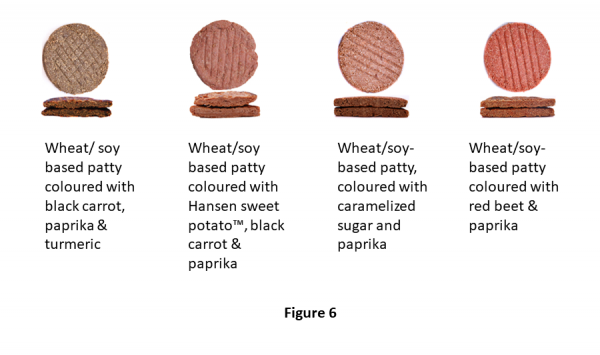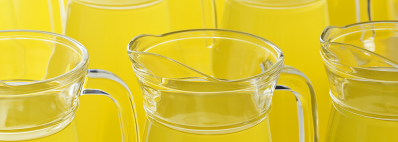Promotional Features
The use of natural colours and colouring foods in plant-based food
By Carolin Dunker, Application Manager, Team leader - Meat & Prepared Foods, Global Expertise Center, Chr. Hansen Natural Colors
Colour plays a huge role in food, since consumers use colour to make decisions about whether food is appealing and appetising. Purchase decisions are also significantly influenced by the colour of food.
The trend towards plant-based food is omnipresent. Concerns about health, environment and animal welfare are driving the trend towards plant-based protein. Globally, the food industry is continuously introducing new plant-based meat and non-dairy products to the market. Consumer concerns play an important role in these segments too, as consumers look to increase their consumption of plant-derived ingredients to achieve healthier and cleaner lifestyles. Without colour however, plant proteins don’t look tasty.
Colour matters to consumers in plant-based food and beverage applications
This poses a challenge for manufacturers, since protein sources used, such as soy, pea and almonds, do not provide the colour associated with recognisable food like red-brown meat; protein sources are mostly an unappealing gray-brown colour. Therefore, the use of colour is essential to meet customer expectations. The various protein bases react differently to colour in terms of shade and stability.
Plant based yogurt – soy yogurt
Different fermented soy yogurts have different background colours and textures. The background colour in each case influences the colour of the end product. A soy yogurt with a low background colour gives a lighter overall impression than a soy yogurt with a high background colour (figure 1).
Soy yogurt from different soy bases coloured with orange carrot concentrate
In addition, the protein source used in each case can lead to the destabilisation of certain pigments, as is the case with soy yogurt and anthocyanins. Anthocyanins are sensitive to the acidity level in the yogurt, which can influence the final colour (figure 2).
Fermented soy yogurt – impact of Dornic acidity on anthocyanins from black carrot concentrate over 8 weeks
A stability test showed that soy yoghurt with both anthocyanins from black carrot concentrate and betanins from red beet concentrate become lighter and more orange over an 8-week storage period; this colour change is visually perceptible (figure 3).
Soy yogurts with black carrot concentrate and red beet concentrate become lighter and more orange. Strong evolution from the first week.
In contrast, both natural beta-carotene and orange carrot concentrate show a very stable colour in soy-based yogurt during the storage period (figure 4).
Carotenes tend to be more colour stable in soy-based yogurt
Plant-based meat analogues
Another important product segment is plant-based meat products, of which plant-based burger patties is a large subsegment. Again, the protein base used significantly influences the final colour. For example, using the same natural colour, a pea protein gives a more orange-brownish colour compared to the protein blend of wheat/soy. As a result, a coloured burger patty based on wheat/soy protein looks more brownish than one coloured with pure pea protein (figure 5).
Base colour matters
Using the example of a wheat/soy protein blend, many different colours can be achieved. For example, a very bright brownish red can be achieved by combining beetroot concentrate and paprika extract (figure 6).
The same wheat/soy-based patty can be coloured differently using colours from natural sources
There are also many colouring options for plant-based emulsified sausage products. A combination of pea protein/wheat gluten/protein powder serves as the base in this example, which is a brownish-yellow colour. (figure 7).
Plant-based emulsified sausage with a pea protein/wheat gluten/egg white base – uncoloured vs. coloured with paprika extract
In order to achieve a typical pink scalded sausage colour, various options based on radish and sweet potato concentrate can be used, to achieve the desired shade and adjusted in fine nuances (figure 8). Paprika is also well suited for this application.
Sweet potato concentrate vs. red radish concentrate in plant-based emulsified sausage with a pea protein/wheat gluten/egg white base
To summarise, the background colour of plant-based foods differs significantly from the animal- based product they are trying to imitate, which explains why using colour is so important in these products. The ingredients used in the overall formulation can influence the colour and its stability. However, good quality and appealing results can be achieved with both natural colours and colouring foods.
For more information please contact:
Erica Franco, Marketing manager, Natural Colors Western Europe
Email: VGRESE@pue-unafra.pbz
Chr. Hansen is the world leader in natural colors. We apply our deep knowledge and insights about pigments, applications, and regulatory requirements around the globe to help our customers – and consumers – bring safe and appetizing food to the table.
Sourced from nature, our color portfolio is the largest and most vibrant in the food industry, and our active role in the industry spans 145 years. We are part of Chr. Hansen Holding, who develops natural ingredient solutions for the food, nutritional, pharmaceutical and agricultural industries. Chr. Hansen employs over 3,000 people in 30 countries and is listed on Nasdaq Copenhagen.
Feel free to contact us at any time to discuss your natural color needs













